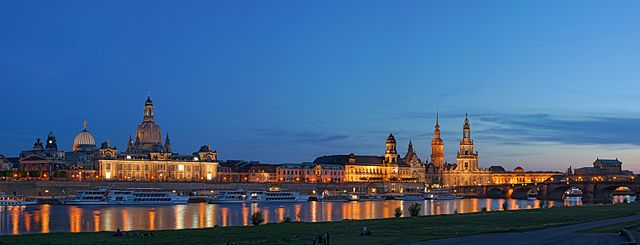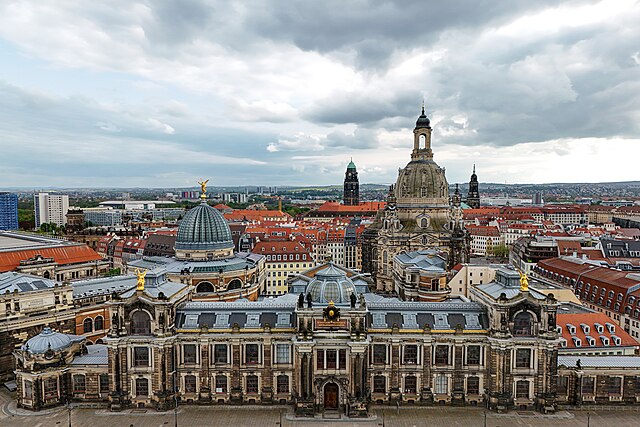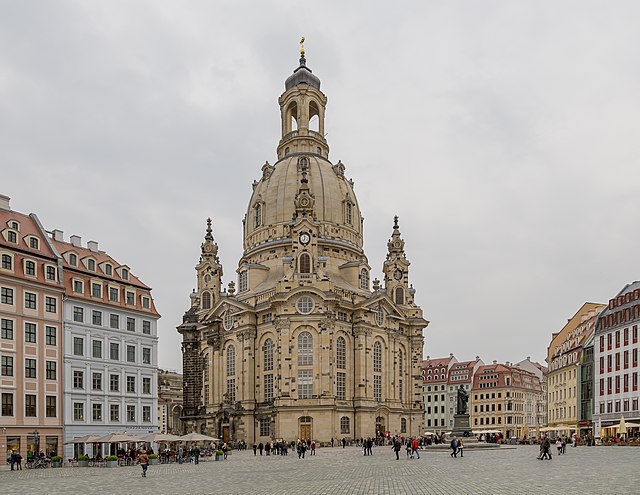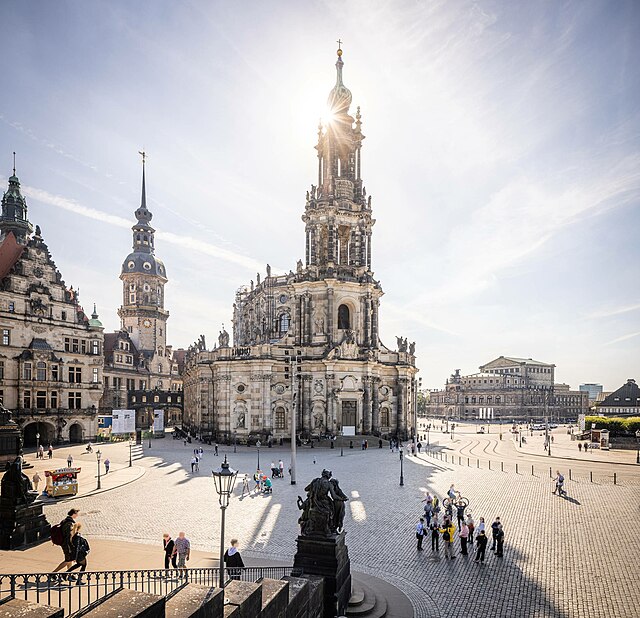Pillnitz Palace is a restored Baroque schloss at the eastern end of the city of Dresden in the German state of Saxony. It is located on the right bank of the River Elbe in the former village of Pillnitz. It was the summer residence of many electors and kings of Saxony; it is also known for the Declaration of Pillnitz in 1791.
Riverside Palace (Wasserpalais)
Schloss Pillnitz in 1800
Ruins of the Countess' palace after the fire of 1818
Schloss Pillnitz circa 1850
Dresden is the capital city of the German state of Saxony and its second most populous city after Leipzig. It is the 12th most populous city of Germany, the fourth largest by area, and the third most populous city in the area of former East Germany, after Berlin and Leipzig. Dresden's urban area comprises the towns of Freital, Pirna, Radebeul, Meissen, Coswig, Radeberg and Heidenau and has around 790,000 inhabitants. The Dresden metropolitan area has approximately 1.34 million inhabitants.
Image: Elberadweg pano DSC06346 Dresden Altstadt bei Nacht
Image: HFBK Dresden 2024 Luftbild Toni Klemm 2500px
Image: Dresden Germany Exterior of Frauenkirche 04
Image: Dresden, Schloßstraße 24, Kathedrale Sanctissimae Trinitatis, 17.6.2.40 060474








